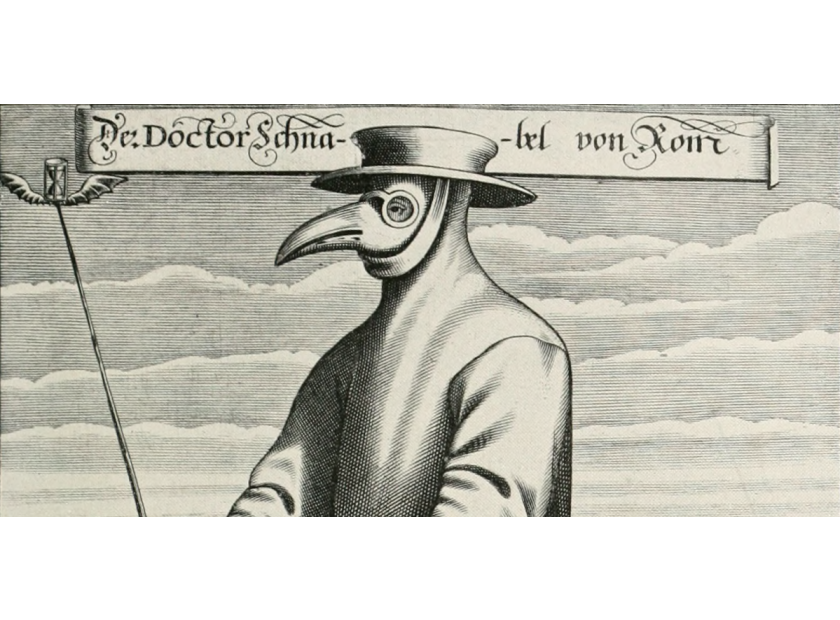Modern Case of an Archaic Plague
On September 13th, 2009 a University of Chicago researcher, Malcom Casadaban, was admitted to a local hospital due to fever, aches, cough and shortness of breath. Blood tests indicated renal failure, severely elevated white blood cell count, and a left shift in the ratio of immature to mature neutrophils. Blood smears indicated bacteremia. The patient was treated with vancomycin and pipercillin/tazobactam, but died of cardiac arrest within 12 hours. Blood cultures later revealed a frightening diagnosis; plague.
Dr. Malcom Casadaban, 60, died from a laboratory acquired infection of an attenuated strain of Yersinia pestis.
PCR analysis of the Y. pestis strain concluded that it was similar to the attenuated strain used in Dr. Casabadan’s laboratory. Investigation showed the laboratory’s safety protocols to be adequate, and the infection of a seemingly healthy person with an attenuated plague strain was highly unexpected.
The Y. pestis strain in question had been attenuated through the inactivation of the pgm (pigmentation) locus. The pgm locus is a large and unstable region of the Y. pestis genome linked to a siderophore-independant iron uptake gene. pgm+ strains of Y. pestis are able to grow on iron-deficient media and uptake Congo Red, causing a pigmentation of colonies grown in its presence. The attenuated pgm- strain is restricted in its ability to sequester iron from its environment, a necessary survival factor when causing disease, and is therefore restricted in its ability to cause disease. Live vaccinations have been used for years with pgm- strains without any reported incidence of death.
So how did Malcolm Casadaban die?
The CDC performed studies to compare the isolated Y. pestis with a pathogenic reference strain to see if the bacteria had re-acquired its virulence mechanisms through natural means or genetic manipulation. Mice were infected with increasing doses of each strain and researchers determined what is known as the strain’s LD50, which is the dose at which half the infected mice are expected to die. The pathogenic strain had an LD50 of <100CFUs and the isolated strain had an LD50 of >108CFU. This study indicated that the strain Dr. Casadaban had been infected with was the attenuated Y. pestis strain, and it had not acquired (or re-acquired) any virulence mechanisms.
Yersinia pestis, stained red in the gut of a flea and usually associated with flea-borne transmission from rodents, is responsible for three types of plague disease – Boubonic, Pneumonic and Septicemic
At this point, the investigation began to focus on whether or not Dr. Casadaban had any physiological conditions that may have left him vulnerable to the attenuated plague strain. A pathological investigation found that his alveolar structure was intact without any inflammatory infiltrates which would have been indicative of pneumonic plague. Instead, an immunochistochemical stain using monoclonal antibodies confirmed earlier blood culture tests suspecting septicemic plague.
Additional post-mortem analysis indicated elevated blood serum levels of iron (541 mcg/dL, normal range 40-160 mcg/dL) and blood saturation of iron (83%, normal range 14-50%). A genetic test later confirmed a condition known as hereditary hemochromatosis (HHC). HHC is a rare disorder where the body absorbs more iron than it needs. Since the body lacks a mechanism to deal with this excess iron, it builds up in deposits. If left untreated, this condition can shorten the lifespan of a normal person, but it also goes unnoticed in about half of all who are affected. It is hypothesized that the buildup of excess iron in Dr. Casadaban allowed this attenuated strain of Y. pestis to grow and cause disease, even with its deficient ability to acquire iron.
Indeed, research by Jackson and Burrows as early as 1956 has demonstrated in mouse models that excessive iron supplementation can enhance the virulence of pgm- strains of Y. pestis. More recently, a study by Quenee et al. researched the virulence of pgm- Y. pestis on mice genetically modified to display symptoms of HHC. The mice altered to have hemochromatosis were significantly more likely to die from the nonpigmented strains than the unaltered mice.
Studies show the increased virulence of two pgm- strains (Graphs A and B) of Y. pestis in mice altered to have hemochromatosis (shaded circles and triangles) compared to wild type mice (white circles and triangles) - J Infect Dis. (2012) 206 (7): 1050-1058.
An unfortunate irony of this case is that hereditary hemochromatosis was heavily selected for in the dark ages in response to bubonic plague epidemics. Logic would suggest that with a buildup of iron, victims of hemochromatosis would be more susceptible to the plague. Instead, somehow due to the inability of the host to regulate iron concentrations, the host’s macrophages actually have a deficiency in iron compared to a healthy person. In normal cases of bubonic plague, Y. pestis can survive inside a host’s lymphatic tissue and is very good a evading the host immune response. This results in swollen lymph nodes called “buboes,” where Y. pesits is engulfed by macrophages and hitches a ride to other sites within the body to cause infection. In a subject with HHC, enveloped Y. pestis dies within the macrophage due to a paradoxical deficiency of iron, resulting in a reduced ability to cause disease. Populations of Northern European decent have a disproportionately high incidence of hemochromatosis due to its protective properties during the years of the Black Death.
While it is unclear how Dr. Casadaban was infected with the bacteria and developed septicemic plague, this case underlines the importance of exercising a strict laboratory safety protocol, even with attenuated strains. Always follow recommended safety precautions when dealing with known pathogens and assume that any bacterial sample is capable of causing disease.
written by: Christopher Massey
Christopher Massey is the Research and Development Manager at Hardy Diagnostics. He earned his degree in microbiology at Cal Poly in San Luis Obispo, California.







